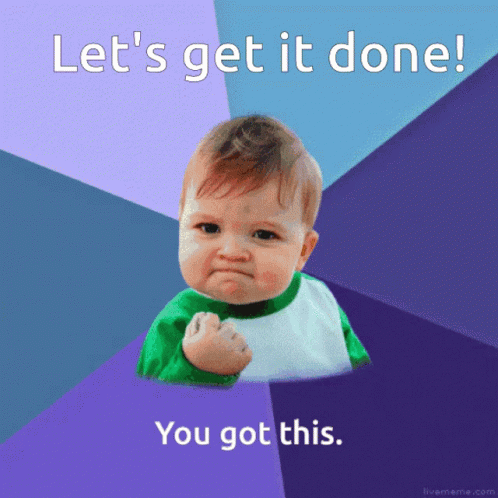STRONG Teacher Strategies: Implementing Effective Routines and Procedures
Discover effective strategies for implementing clear classroom routines and procedures with this comprehensive guide for teachers.

STRONG Teacher Strategies: Implementing Effective Routines and Procedures
Support Why EdifyImplementing Effective Routines and Procedures
Establishing clear expectations is a cornerstone of effective classroom management and an integral component of positive behavior support. When teachers share their expectations explicitly, students gain a roadmap for understanding what is required of them in various situations.
This clarity helps prevent misunderstandings and builds a sense of security and belonging within the classroom. Students who know what to expect feel more comfortable in the routines. Throughout my years of teaching, the routines have also relieved some of the stress caused by relentless lesson planning.
They provide structure for the students and their teachers. By creating an environment where expectations are well-defined, teachers empower students to take ownership of their behavior and engage more fully in their learning.
Collaborative Rule-Setting
To establish clear expectations, teachers can start by working together with their students to develop classroom rules and norms. This collaborative approach helps students feel a sense of ownership and accountability and increases the likelihood of following the established guidelines.

Teachers can facilitate discussions about the behaviors necessary for a positive learning environment, encouraging students to express their thoughts and ideas. This inclusive strategy fosters a culture of respect and understanding, where students are more likely to support each other in meeting shared expectations.
Modeling and Implementation
In addition to creating rules, teachers need to model the expected behaviors consistently. Demonstrating how to follow classroom procedures, interact respectfully with peers, and respond appropriately to conflict allows students to see practical applications of the expectations.
Role-playing scenarios can be particularly effective in reinforcing these concepts, as they allow students to practice expected behaviors in a safe setting. When done well, this modeling becomes an engaging culture-building activity unto itself. By integrating modeling into daily routines, teachers can help students internalize expectations, making them second nature over time.

Communication Strategies
Communication is crucial for establishing clear expectations. Teachers should regularly reinforce classroom norms through visual aids, verbal reminders, and positive reinforcement. Technology, like interactive platforms for sharing updates, can keep students engaged. Incorporating culturally responsive practices within the context of classroom management is essential for creating an inclusive environment where all students feel safe and valued.
Cultural Responsiveness
By recognizing and honoring diverse cultural backgrounds, teachers can establish rules and expectations that reflect the values and experiences of all students, which can lead to reduced behavioral issues. Integrating students' cultural references into the curriculum makes learning more relevant and fosters engagement and motivation. Promoting inclusive classroom discussions allows for varied perspectives, encouraging students to respect one another's views and collaborate more effectively. As a result, these culturally responsive strategies ensure that all students feel represented and understood and contribute to a positive classroom climate, enhancing students' commitment to classroom norms and fostering a greater sense of belonging, ultimately leading to improved learning outcomes.
Finally, it is important to recognize that establishing clear expectations is an ongoing process. Teachers should remain open to feedback from students and be willing to adjust expectations as necessary to meet the diverse needs of their learners. Regular check-ins can help gauge student understanding and comfort with the established norms, allowing for constructive discussions around any challenges that may arise.
Developing Consistent Routines
Developing consistent routines is a cornerstone of effective classroom management and positive behavior support. Routines provide a structured environment where students feel secure and understand expectations. By instituting predictable patterns for daily activities, teachers can minimize disruptions and foster a sense of belonging among students. These consistent routines enhance learning outcomes and empower students to participate actively in their education. As educators, it is essential to recognize that the clarity of routines can significantly influence student behavior and engagement.
Creating Effective Routines
To create effective routines, teachers should identify key activities that occur regularly in the classroom, such as morning greetings, transitions between subjects, and end-of-day procedures. Involving students in this process can enhance their investment in the routines. For instance, allowing students to contribute ideas on how to organize classroom materials or how to signal the end of a group activity encourages ownership and accountability. This collaborative approach strengthens relationships and enhances student buy-in, making routines more likely to be followed consistently.
Visual Aids and Implementation
Visual aids are important in reinforcing routines and helping students internalize expectations. Classroom charts, diagrams, and schedules can serve as constant reminders of daily procedures.

Here are some actionable tips for teachers to effectively implement visual aids in their classrooms:
- Create Visual Schedules: Develop a daily or weekly schedule with images of activities and lessons. Display it prominently in the classroom where all students can see. This helps all students, particularly younger ones and those with special needs, to anticipate what's next.
- Use Color-Coding: Incorporate a color-coding system for different subjects or types of activities. For instance, use blue for math-related tasks and red for reading. This method allows students to identify what to expect during the day quickly.
- Develop Interactive Charts: Engage students by allowing them to interact with visual aids, such as placing their names on a behavior chart or moving clips to signify the completion of tasks. This participation reinforces their understanding of routines and expectations.
- Incorporate Technology: Utilize educational apps and digital tools that provide visual schedules and reminders. Many platforms allow for customization, enabling teachers to tailor the aids to their specific student needs.
- Provide Visuals for Individual Tasks: Create step-by-step visual guides for complex activities that students can reference. For example, if students complete a science experiment, provide a simple flowchart outlining each step with images accompanying the instructions.
- Use Pictures with Routine Expectations: Help students grasp classroom behavior expectations by displaying visuals that depict appropriate versus inappropriate behaviors. Use images of students engaging in positive behavior to create a visual reference for acceptable actions.
- Review Visual Aids Regularly: Review the visual aids with students, especially after breaks or transitions. This practice reinforces understanding and keeps routines fresh in their minds.
By implementing these strategies, teachers can make the classroom environment more predictable and supportive. When students know what to expect, they are more likely to feel confident in participating and engaging in learning.
Flexibility and Adaptation
Consistency in implementing routines is crucial, but flexibility is equally important. Teachers should be prepared to adapt routines based on the unique dynamics of their classroom. It's never too late to change something that isn't working. For example, if a particular routine doesn't resonate with students or leads to confusion, it may warrant reevaluation. Regularly seeking feedback from students can help identify areas for improvement. By being open to modifying routines, teachers demonstrate a willingness to meet the needs of their students, fostering a supportive and responsive classroom environment. If we want students to change, we need to model that process.
Home-School Connection
Finally, establishing routines should complement ongoing communication with parents and caregivers. Sharing classroom routines with families can bridge the gap between home and school, allowing parents to reinforce these practices at home. This collaboration ensures that students receive consistent messages about expectations, both in and out of the classroom. As teachers develop routines that promote positive behavior and foster engagement, they create a vibrant learning environment where all students can thrive. Educators enhance classroom management and cultivate a nurturing space for their learners by focusing on consistent routines.
You've Got This

Remember that implementing new classroom routines and procedures is a journey that requires patience, persistence, and dedication. While it may take time for these strategies to become second nature, the investment in establishing clear expectations and consistent routines will pay dividends in creating a more productive and harmonious learning environment. Every small step toward better classroom management is a victory worth celebrating, and each success builds momentum for further improvements. Trust in your ability to make positive changes, stay committed to your goals, and know that your efforts to create a structured, supportive classroom environment will impact your students' educational experience.
❤ Enjoy this Article?
🍵 Show Your Support and 🤗 Share It



